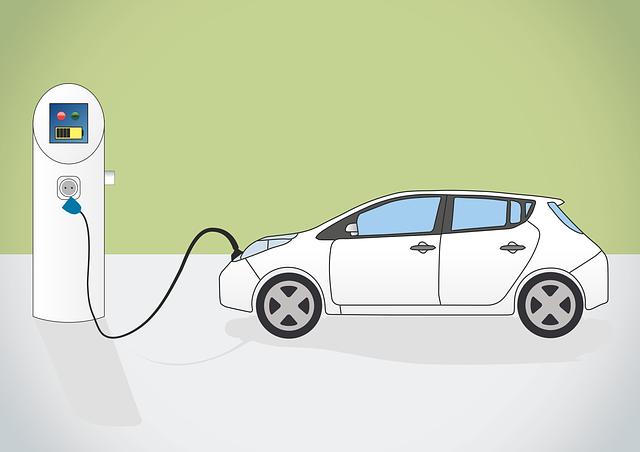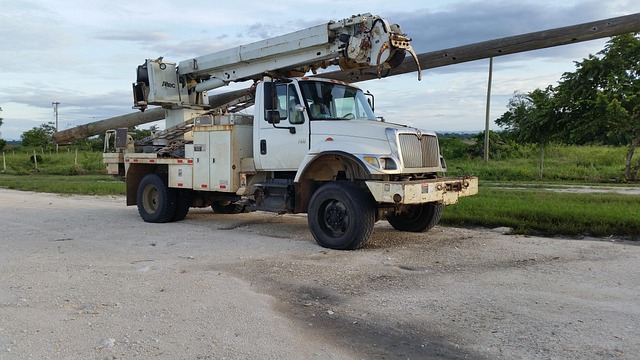Looking to register your car in California? Navigating the process can seem daunting, but with the right preparation, it doesn’t have to be. This comprehensive guide breaks down the California vehicle registration process step-by-step, from understanding key requirements to crucial aspects like VIN verification. By following these easy instructions, you’ll ensure a smooth and efficient car registration experience.
- Understanding the California Vehicle Registration Process
- Gather Required Documents for Car Registration in CA
- The Role of VIN Verification in California Car Registration
- Step-by-Step Guide to Registering Your Vehicle in California
- Important Considerations and Frequently Asked Questions (FAQs)
Understanding the California Vehicle Registration Process

Understanding the California Vehicle Registration Process
In California, registering a car involves several key steps, ensuring your vehicle is road-ready and compliant with state regulations. The process begins with gathering essential documents, including proof of ownership, insurance, and identification. Once these are in order, the next crucial step is conducting a Vehicle Identification Number (VIN) verification. This involves checking the VIN on the vehicle against records to ensure it matches the reported information. In California, this often includes a mobile VIN inspection or using a mobile VIN verifier for added convenience and accuracy.
After successful VIN verification, you can proceed with visiting a California Department of Motor Vehicles (DMV) office or using their online services to register your car. This includes submitting application forms, paying the registration fees, and providing additional details about your vehicle. Ensure all information is accurate and complete to avoid delays in the registration process. With these steps followed diligently, you’ll have your car registered, ready to navigate California’s roads legally and with peace of mind.
Gather Required Documents for Car Registration in CA

Before you begin the registration process, it’s crucial to gather all the essential documents required by California. These include your vehicle’s Registration Application (Form DVF 140), Proof of Identification (a valid driver’s license or state-issued ID card), Proof of Insurance, and a valid emissions test certificate. Additionally, you’ll need to undergo a vin verification process, which can be efficiently handled by a mobile vin verifier. This involves checking the vehicle identification number (VIN) to ensure its accuracy and history, a step that is both crucial and often overlooked.
For out-of-state residents transferring their registration to California, you may need further documentation, such as proof of previous state registration and a bill of sale or purchase agreement detailing the transaction. While a traditional vin inspection at a designated center is acceptable, many opt for the convenience of a mobile vin verification service, which allows for a faster and more flexible process.
The Role of VIN Verification in California Car Registration

In California, registering a car involves a thorough process designed to ensure vehicle safety and legitimacy. A key component of this process is vin verification, which leverages the Vehicle Identification Number (VIN) to cross-reference crucial data about the vehicle with official records. This step is non-negotiable as it plays a pivotal role in confirming that the car meets all necessary safety standards and isn’t stolen or illegally modified.
A mobile vin verifier or mobile vin inspection streamlines this verification process, allowing for convenient and efficient checks at various points during registration. These mobile services utilize advanced technology to swiftly pull up detailed vehicle histories, including previous owners, maintenance records, and any reported accidents or damages. By integrating such innovations into the car registration process, California aims to enhance safety, deter fraud, and simplify procedures for both residents and automotive professionals.
Step-by-Step Guide to Registering Your Vehicle in California

Registering a car in California involves several steps to ensure your vehicle is legally recognized on state roads. Here’s a step-by-step guide to make the process smoother. Firstly, gather all necessary documents, including your vehicle’s registration certificate from the previous state, proof of insurance, and a completed California Vehicle Registration application form. You’ll also need to undergo a vin verification process, which can be conveniently done through a mobile vin inspection.
Next, visit a California Department of Motor Vehicles (DMV) office or use their online services to submit your application. During the vin verification stage, a DMV representative will check your vehicle’s details against their records and ensure everything matches. Once all documents are in order and the vin inspection is successfully completed, you’ll be issued a new California vehicle registration certificate.
Important Considerations and Frequently Asked Questions (FAQs)

Before registering your car in California, there are several important considerations to keep in mind. One crucial step is ensuring your vehicle’s Vehicle Identification Number (VIN) is accurately verified. This process, often facilitated by a mobile vin verifier or vin inspection, checks for any discrepancies or potential fraud associated with the VIN, which is essential for both safety and legal compliance. It’s recommended to have this done before proceeding with registration.
Additionally, frequently asked questions (FAQs) abound regarding the registration process. For instance, what documents are required? How long does it take? Are there specific fees to consider? A mobile vin inspection can streamline the initial verification step while also answering these common queries. Remember, accurate and timely VIN verification is a critical first step in securing your car’s registration in California.
Registering a car in California is a straightforward process that requires careful attention to detail. By understanding the steps involved, gathering the necessary documents, and ensuring proper VIN verification, you can efficiently complete your vehicle registration. Remember to keep your registration up-to-date and comply with all local regulations for a smooth driving experience.
